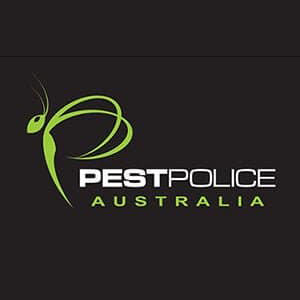The fact that Australia has spiders is not a surprise but mind you, the nation is not overrun by them. Meaning, you need not be worried about spiders if this is your first visit to the country.
We do, however, have some of the most toxic species on the globe, which is a fact that many generally neglect because you only see them if you a) go seeking them or b) have the misfortune to find them beneath or inside anything. The fact remains that they are more afraid of us than we are of them.
From here on out, we’ll share important information about dangerous Australian spiders, including bite prevention to first aid. Learn how to react if you are bitten by a spider and how to identify those dreaded Redbacks.
Spiders found in Australia
The spider population in Australia is estimated to be over 2000 different species, with just a small number of them actually posing a threat to human health. And though all spiders have venom glands, only a few species have fangs that are long enough to puncture the skin and cause an allergic reaction.
In 2016, Australia reported its first death as a result of a spider bite since 1981. Worth noting that redback spiders and funnel-web spider antivenom are the most common types of spiders known to attack humans; reportedly attacking approximately 2000 people each year.
What to do when you see a Redback Spider
In most cases, a spider that is crawling up the wall or resting on a window sill is not a threat to anyone’s safety. In addition, individual reactions to a spider bite might differ significantly depending on the person’s health and the quantity of venom they have been exposed to, among other factors.
What do Redback Spiders look like?
Spiders such as redbacks like to hide in protected, dry locations such as mailboxes and garden sheds. Typically, the female species are responsible for the majority of severe bites. Redback spiders may be distinguished from other spiders by the red stripe that runs down the back of their black bodies as their name suggests.
Australia’s redback spider (Latrodectus hasselti), which is widely distributed across the nation, is one of the most well-known and readily recognisable spiders here. The female redback, which has a noticeable red stripe on her abdomen, is a frighteningly little creature, measuring between 3mm to 10mm in length.
As a result of injecting a very sophisticated concoction of venom into the body, it is also responsible for the bulk of severe spider bites that occur in Australia. Fortunately, no other human fatalities besides the reported case in 2016 have been documented since the introduction of an antivenom in 1956.
Removal of a spider from inside your own home
You should take the spider outdoors if you notice it and are convinced that it will not hurt you. Using a tightly-fitting container, such as a glass jar, secure it with a piece of paper and carry it outdoors.
As a precautionary step, you may want to consider wearing gardening gloves or other heavy-duty gloves to protect your hands. If the spider is crouched in a narrow space, such as a windowsill, you’ll have to wait until it comes out before you try and capture it, which will take longer.
Pest control should be called if the spider is threatening, especially if you aren’t sure about your identification skills or if you are generally afraid of spiders.
As a preventive technique, check for spiders from inside and outside your home by inspecting windows, walls, verandas, ceiling cavities, and the area under the floor. By removing those ordinary black house spiders and generally keeping the house spider-free, you can make your place less enticing to nasty white-tailed spiders, which pack a painful bite.
It is then recommended that you get your home professionally treated at least twice a year if you have arachnophobia. This should be done once at the beginning of spring and once in the middle of summer.
Spiders in your car
When you’re trapped in your vehicle with a spider, it’s best not to freak out. Instead, turn on the hazard warning lights, roll down your window, slow down, and come to a complete stop with the engine off.
The breeze will keep the spider away from the window and off you and your family members. When you have come to a safe halt away from traffic, open the passenger door and turn all of the fans on with the blades pointing down.
Treating Spider Bites: What to Do if You Get Bitten
Even if you are bitten, attempt to capture or photograph the spider to identify its species in case medical attention becomes necessary.
The majority of severely poisonous spiders will begin to damage the human body within 30 minutes of being bitten. If you believe you have been bitten by a deadly redback or funnel-web spider, remain as motionless as possible and avoid raising the region where the bite occurred.
It is critical to seek medical attention at the local hospital as soon as possible. Never pinch or massage the wound as this will just serve to spread the venom more and faster than before. A funnel-web spider wound requires the use of a tightly wrapped bandage over the whole limb, but a redback spider wound does not require the administration of such a bandage.
Spider Preventive Measures
Whether you are afraid of spiders or not, it is always preferable to avoid having them in your home! Here are some preventative measures you might want to use:
- Maintain a clutter-free environment in your house.
- Avoid putting boxes on the floor. Vacuum your property regularly, paying special attention to nooks and crevices (remove spider webs!).
- Identify potential points of access, such as cracks or openings around windows and doors.
- Make an appointment with a professional pest controller to have your house treated and guarantee you have the highest degree of protection at all times.
Other preventive measures to avoid spider bites
- Always give your shoes a good shake before putting them on, especially if you have left them out in the weather.
- Try not to leave clothing or towels on the floor after you’re done.
- When you’re outdoors, and especially at night, you should wear shoes.
- Check your bedding to see whether it’s on or near ground level.
- If you find a spider in a swimming pool, don’t assume that it has drowned. Instead, look for other possibilities. Spiders may survive for hours on air bubbles attached to their leg hairs, which they gather from their webs.
First aid for spider bites
As long as it is safe to do so, gather the spider and store it in a sealable container for identification purposes. If this is not feasible, do your best to describe the spider once you get to the hospital, paying particular attention to characteristics such as size, colour, pattern, and the location of the bite, among other things.
Key Takeaways
Contrary to popular belief, spiders are not actively seeking human victims. In general, spiders generally avoid interaction with humans and will only attack if provoked, which occurs only in very rare instances.
Are you frightened at the prospect of encountering these poisonous eight-legged creatures right in your own space? Call us at Pest Police for expert assistance with <spider pest control in Melbourne>! If you’re interested in any of our pest management services, we’ll provide you with free quotes when you get in touch.

